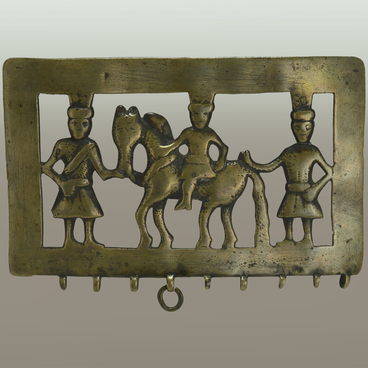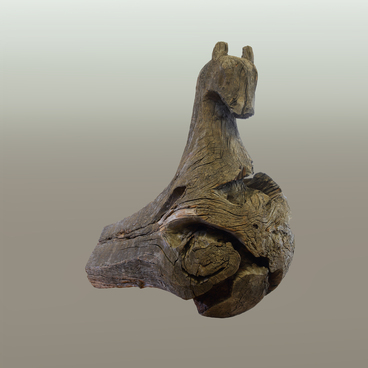The Russian Museum houses works that undoubtedly belong to the masterpieces of folk art. One of them is a gingerbread board made by Matvey Voroshin in 1779.
A gingerbread board is a baking mold made from hardwood with a carved counter-relief pattern that is used to leave an imprint on gingerbread. The carver of this gingerbread board, Matvey Voroshin, came from the village of Gorodets in the Nizhny Novgorod Governorate. It was a famous folk art center, with wood carving playing a special role. The Old Believers were particularly prominent in the cultural and economic life of Gorodets.
The board used to belong to Nikolay Petrovich Likhachev (1862–1936), a well-known scientist, collector, and bibliographer. He had a separate building built for his extensive collection, which housed not only gingerbread boards, but also autographs, icons, stamps, rings, ancient seals, and ancient clay vessels. After the revolution of 1917, the dispersion of the collection was unavoidable. The exhibits entered the collections of several museums. Part of the collection ended up in the Russian Museum and was distributed among several departments.
The rectangular board made by Matvey Voroshin features a double-headed eagle in a circle with a scepter and an orb. Below is a vase with two tulips diverging to the sides, two more tulips and a royal crown are depicted above. The composition is surrounded by the following inscription:
A gingerbread board is a baking mold made from hardwood with a carved counter-relief pattern that is used to leave an imprint on gingerbread. The carver of this gingerbread board, Matvey Voroshin, came from the village of Gorodets in the Nizhny Novgorod Governorate. It was a famous folk art center, with wood carving playing a special role. The Old Believers were particularly prominent in the cultural and economic life of Gorodets.
The board used to belong to Nikolay Petrovich Likhachev (1862–1936), a well-known scientist, collector, and bibliographer. He had a separate building built for his extensive collection, which housed not only gingerbread boards, but also autographs, icons, stamps, rings, ancient seals, and ancient clay vessels. After the revolution of 1917, the dispersion of the collection was unavoidable. The exhibits entered the collections of several museums. Part of the collection ended up in the Russian Museum and was distributed among several departments.
The rectangular board made by Matvey Voroshin features a double-headed eagle in a circle with a scepter and an orb. Below is a vase with two tulips diverging to the sides, two more tulips and a royal crown are depicted above. The composition is surrounded by the following inscription:



